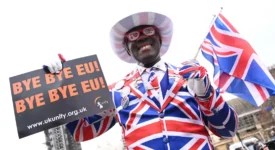The only North African economy that is on the list of the EU’s top ten development assistance beneficiaries is Morocco. With the allocation of about 670 million euros annually, Rabat assumes the eighth position on Europe’s aid ranking list, accounting for about a third of the entire development budget that the European Union allocates to the region defined as “North of Sahara”. This region, which receives about 1,976 billion Euros in development assistance every year, is the EU’s third most important region based on allocation of development aid. The first one is “South of Sahara” and the second “Central and South Asia”. This breakdown follows the aid reimbursement of particular Member States, yet when speaking about the EU Commission as an aid donor, no North African economy finds itself on the top-ten list.
Generally, both the Commission and Member States target mostly social infrastructure and services, which are traditionally the most salient sectors covered by the EU. It is followed by economic infrastructure and services, though the difference between the social and economic is tiny when EU aid comes from the EU institutions. In contrast, EU members prefer to put an emphasis on social considerations. In North Africa, the aid is – or at least believed to be – tailored to meet the needs of particular recipients, just like elsewhere where foreign aid is distributed. For instance, Algeria has obtained about 10 million euros to improve the living conditions of the refugees since 2012 with most of the funds being spent on food supplies and access to potable water. In Morocco, multiple funds are devoted to broader areas, such as migration, environment, non-state actors in development, or human rights support. In contrast, Tunisia recently received aid to help democratic transition while the EU’s 2013 goal for Egypt was security.
Although most North African countries fall into the European Neighbourhood Policy category, Europe does not seem to have a concise idea of how the region should develop. Indeed, development aid should be tailored in order to meet needs, yet the main development challenges of the region, left as a legacy of the Arab Spring revolutions, are rather universal to the entire area. It is therefore questionable whether the EU should focus on scattered development goals throughout the region or whether to focus its funding on economic reform, which could subsequently kick off full-fledged development. Instead of financing scattered development project, Brussels could provide North African economies with both technical and financial assistance to deliver economic reforms and thus create jobs, reform pension system, labour market legislation, and keep public finances tamed.
The push for economic reform should not be separated but go in line with the redefinition of Europe’s foreign policy with respect to the region. As Nick Witney and Anthony Dworkin argue in their “Power Audit of EU-North Africa Relations”, EU Member States should take a more strategic look at the region and its potential rather than stick to conditionality. The strategy part is crucial here, because the region should feel confident enough to know that they matter for the EU as a vital trade partner. The EU should simply move away from acting like a giant NGO to being more business-like when dealing with North Africa. This will inevitably necessitate also the redefinition of the character of the EU’s development policy. The only place where Brussels could show its “caretaker” character could likely be conflict management. If the EU managed to help the region tackle the conflicts in the Sahel, its contribution should easily exceed the almost 2 billion euros that it pumps out there annually. Trade would take care of it swiftly.
In fact, the North African trade with the EU accounts only for about 4 percent of the block’s external trade, even including oil and gas imports from Algeria and Libya. What is perhaps worse is that the intra-regional trade among North African countries accounts also only for about 4 percent of the region’s trade volume. Sorting this out would likely validate the famous slogan “trade not aid”. Most exports from North Africa – apart from energy – include textiles and agriculture, with the latter being among the most controversial trade topics ever.
Certainly, many stakeholders must be engaged and a lot must be done to promote the development process in North Africa. The EU remains the region’s most strategic partner followed by the United States, but both of them have unfortunately been very busy trying to solve economic problems of their own sort. The EU’s current preoccupation with Ukraine and its complex relations with Russia might well divert Brussels’ attention away from its neighbours south across the Mediterranean – thus the Union would yet again miss the unique opportunity to effectively contribute to the region’s sustainable economic development.
Article Tags:
Algeria · Anthony Dworkin · Asia · Brussels · EU Development Aid · migration · Morocco · Nick Witney · North Africa · Rabat · South of Sahara · TunisiaArticle Categories:
EUROPE'S NEIGHBORHOOD






